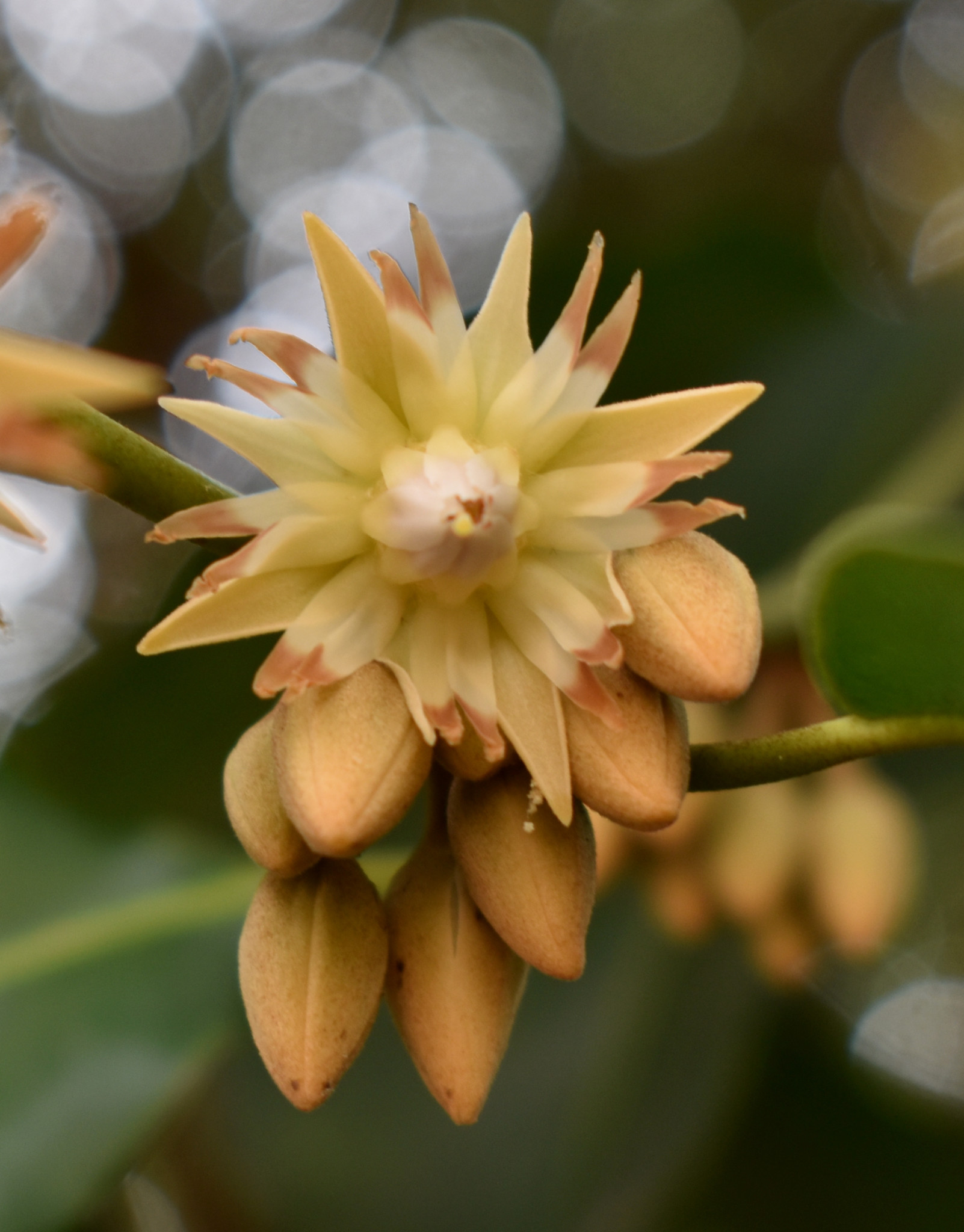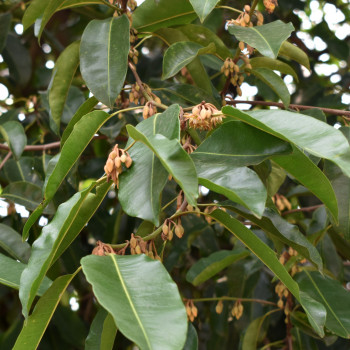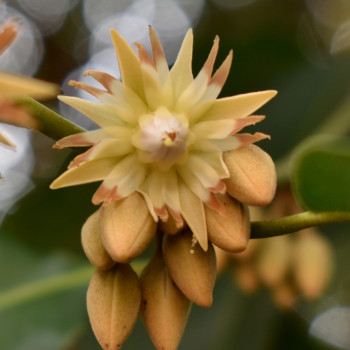Elenji

Scientific Name :
Mimusops elengi L.
Synonym(s) :
Imbricaria perroudii Montrouz.
Local/Common name(s) :
Elenji
Family :
Sapotaceae
Habit :
Tree
Flowering/Fruiting Time :
November-September
Habitat :
Semi-evergreen and evergreen forests, also grown in homesteads
Endemic :
No
Status (IUCN) :
Least concern (LC)
Distribution :
India, Sri Lanka, Malaysia, Australia, New Caledonia, Hawaii; Kerala: throughout
Nativity :
Indigenous
Uses :
Medicine, Dye, Food, Timber, Oil, Hygiene, Ornamental, Musical instrumental
Description (Morphology) :
Evergreen trees, to 20 m high, bark dark grey, cracked or fissured longitudinally, scaly, rough; lenticels vertical; exudation milky; young branches brown pubescent. Leaves simple, alternate, spiral; elliptic or elliptic-oblong, apex obtuse to acuminate, base round or obtuse, margin entire, glabrous, coriaceous; stipules lanceolate, caducous; petiole slender, grooved above, pubescent; lateral nerves many, slightly raised beneath, parallel, slender, looped near the margin forming intramarginal nerves; intercostae reticulate. Flowers bisexual, white, fragrant, 1-3 in axillary fascicles, pedicel 1 cm long. Calyx lobes 8 in 2 series of 4 each, thick, outer lanceolate, valvate, pubescent. Corolla 1 cm across; lobes 24, 3 series of 8 each, with hairs on back and margins, acuminate. Stamens 8, altemating with pilose staminodes; filaments 1 mm, anthers oblong, cordate, 3 mm, connectives apiculate; staminodes lanceolate, acuminate, fimbricate, pilose. Ovary 0.1- 0.15 cm long, void, hirsute without, 6-8-celled; 1 ovule in each cell; style columnar, 5 mm; stigma minutely fimbricate. Fruit a berry, yellow, ovoid, 2.5 cm long, 1.5 cm across, fleshy, epicarp thin; seed usually 1, oblong-ellipsoid, laterally compressed.





